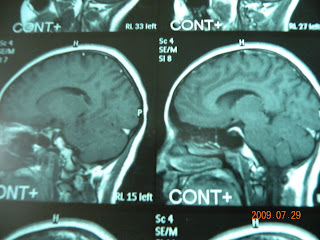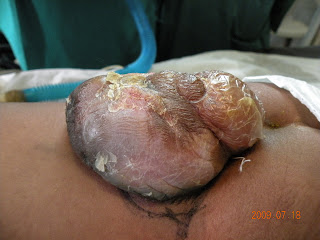


This young guy presented with pulsatile swelling in the scalp
O/E continuous machinery murmur could be heard over the swelling
Diagnosis Cirsoid aneurysm of scalp
Exploration of the pulsatile mass with visualisation of the feeding artery done and the ligation of the feeding vessel with excision of the dilated vessels done
















































